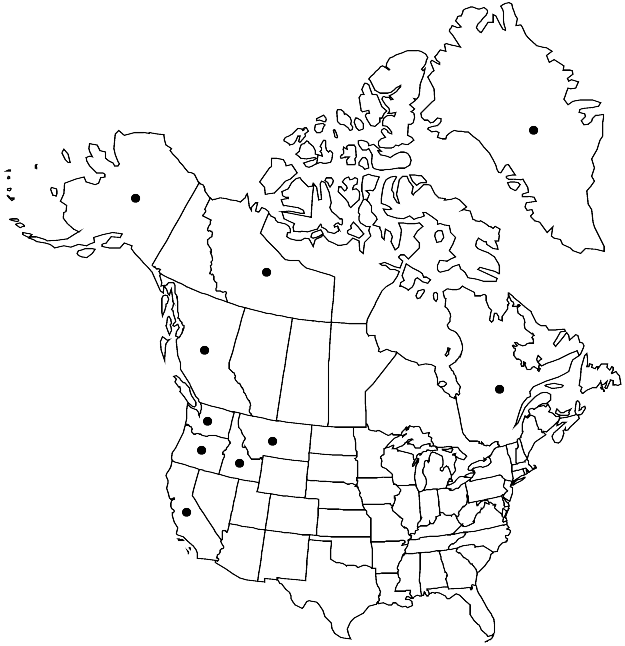Plagiothecium piliferum
in P. Bruch and W. P. Schimper, Bryol. Europ. 5: 186. 1851.
Plants in dense mats, light green to yellowish, glossy. Stems to 6 cm, 1–1.5 mm wide across leafy stem, prostrate, complanate-foliate to subjulaceous. Leaves erect, appressed, imbricate, oblong-ovate, symmetric, concave, 0.8–2 × 0.4–0.8 mm; margins narrowly recurved nearly to apex, entire or minutely serrulate at apex; apex abruptly contracted to long-filiform acumen, flexuose; costa ending just beyond leaf base, sometimes ecostate; alar cells rectangular, 16–75 × 7–20 µm, in 2–4 vertical rows, terminating in 1 cell at base, region triangular; medial laminal cells 36–96 × 3–5 µm. Specialized asexual reproduction unknown. Sexual condition autoicous, usually fruiting. Seta yellow to red, 0.8–1.5 cm, straight. Capsule erect or sometimes slightly inclined, light brown to yellowish or reddish when mature, straight, 1–4 × 0.5–1 mm, smooth or slightly wrinkled when dry, strongly wrinkled at neck; operculum conic, 0.4–0.7 mm; endostome cilia usually absent, or 1 or 2, rudimentary. Spores 9–13 µm.
Phenology: Capsules mature spring–summer.
Habitat: Coniferous or alder-maple woods, on trees, rotten logs, noncalcareous cliffs and boulders, wood in swampy areas
Elevation: low to moderate elevations (30-1500 m)
Distribution

Greenland, B.C., N.W.T., Que., Alaska, Calif., Idaho, Mont., Oreg., Wash., Europe, Asia.
Discussion
Plagiothecium piliferum is easily distinguished by the concave, symmetric leaves with abruptly contracted, long-filiform, flexuose acumina, sometimes to 1/3 the leaf length, and the erect, straight capsules. Although the main center of distribution for the species is in the Pacific Northwest, it has disjunctive occurrences in northern Quebec (James Bay region) and southwestern Greenland. A scanning electron microscope study of the spores of Plagiothecium (R. R. Ireland 1987) revealed that the sculpturing can be used to distinguish P. piliferum from the other North American species of this genus: spores of P. piliferum have branched-baculate ornamentation, the elements covered with conic papillae; the other species have gemmate ornamentation, the elements covered with high-conic to low, rounded papillae.
Selected References
None.
